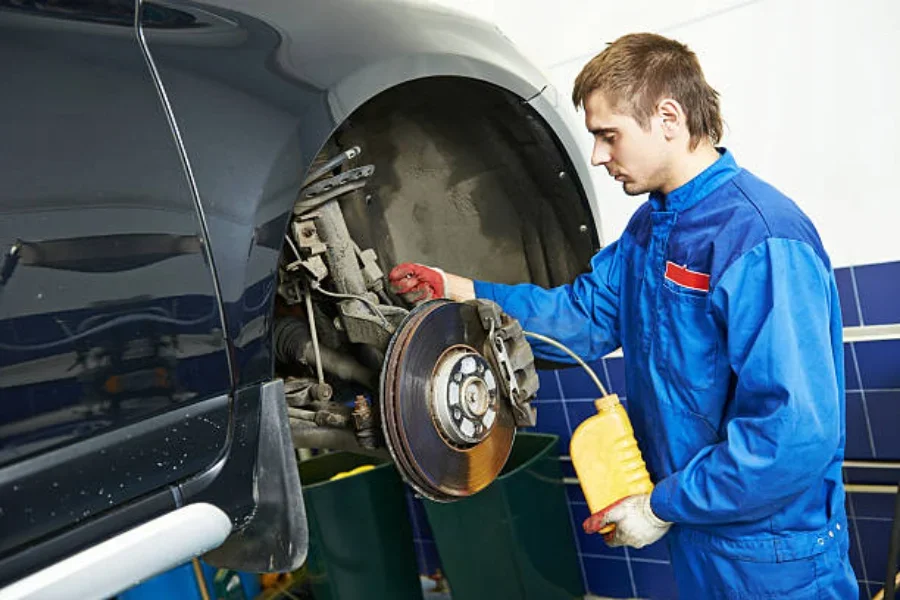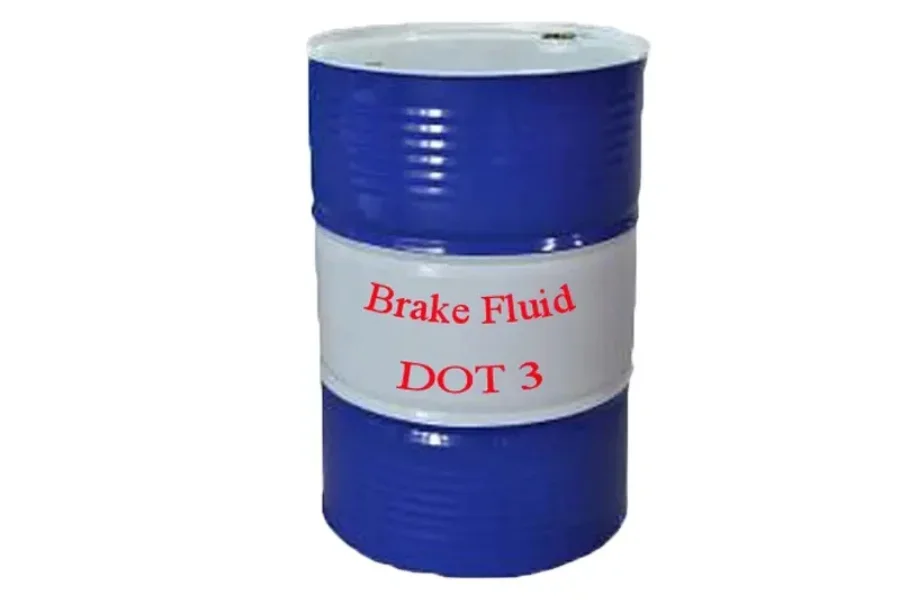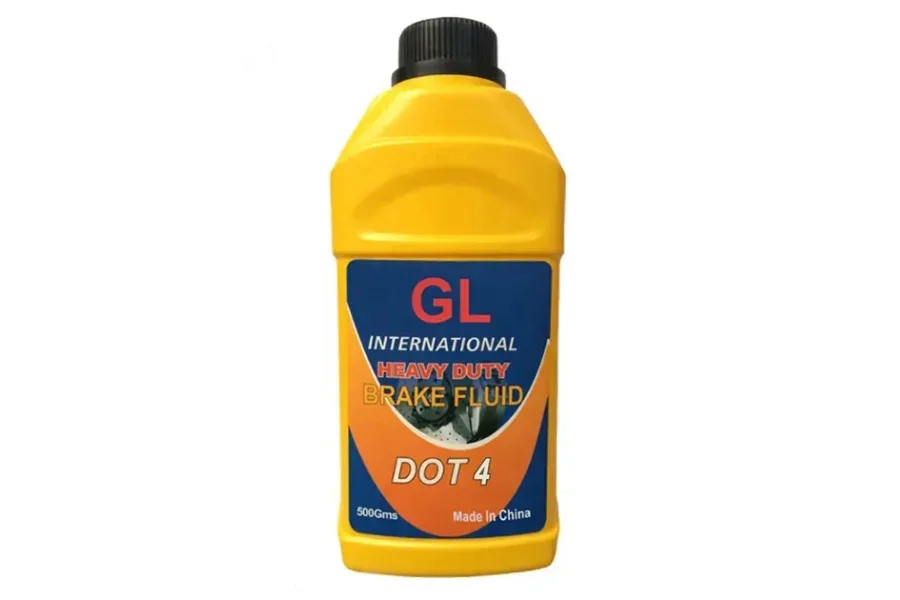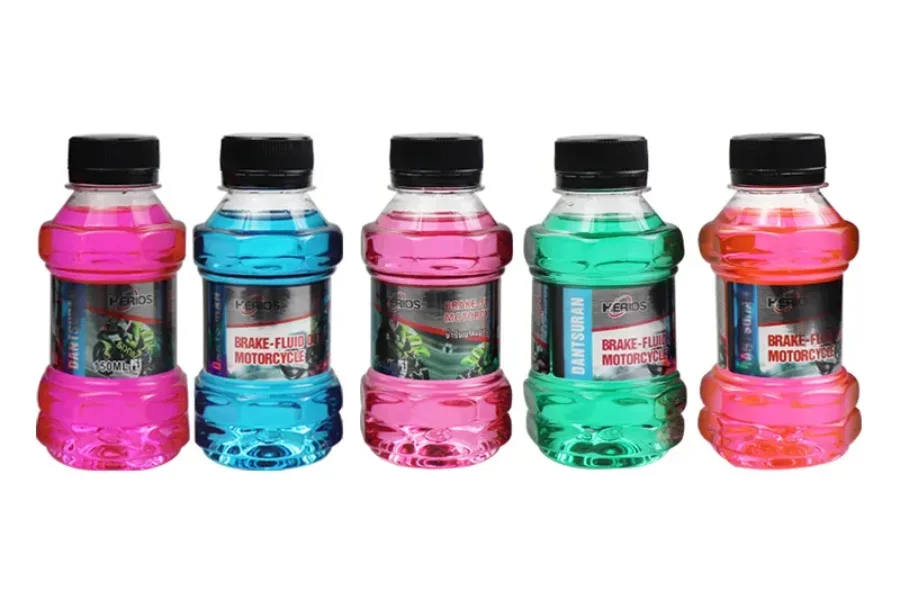A vehicle brake system is one of the most critical parts of the car. The brake system ensures road safety whenever the car is driven. A vehicle brake system contains brake fluid which keeps it working efficiently and smoothly. This fluid needs to be replaced from time to time. When is the right time to replace the brake fluid?
This article will explore the different types of brake fluids available and how to judge the right time to replace them. Iit will also discuss the market share, size, demand, and expected growth rate of the automotive brake fluid market.
Table of Contents
Overview of the automotive brake fluid market
Types of brake fluid
How to judge the right time to replace brake fluid
Summary
Overview of the automotive brake fluid market

The steady rise in vehicle manufacturing and sales across the globe has resulted in the growth of the automotive brake fluid market.
This market is segmented based on type (DOT 3 Glycol, DOT 5 Silicone, DOT 4 Glycol, DOT 5.1 Glycol), sales channel (aftermarket, OEM), vehicle type (passenger cars, commercial vehicles), and region (Europe, North America, Latin America, the Middle East & Africa, and Asia-Pacific). Some key players in the automotive brake fluid market include Shell Tongyi, Caltex, Total, and Voltronic.
In 2020, the global automotive brake fluid market value was estimated to be US $20.32 billion, according to Vantage Market Research. The value is expected to reach US $32.88 billion by 2028 as the market experiences a compound annual growth rate (CAGR) of 6.21% between 2021 and 2028. This growth is ascribed to advancements in technologies and increased vehicle adoption globally.
Regionally, Asia-Pacific accounted for the largest share in 2020. This is because the region has major automobile manufacturers, which has increased demand for automotive fluids. DOT 4 Glycol had the highest market share due to its versatility as it is used on many vehicles. Additionally, based on the distribution channel, the aftermarket segment registered the major share as awareness of the safety guaranteed by using automotive brake fluid increased.
Types of brake fluid
1. DOT 3

DOT 3 is a brake fluid usually used in automobile hydraulic brake systems, specifically in vehicles. This glycol-based fluid is light or clear amber in color. When fresh, it has a boiling point of 401 degrees Fahrenheit (205 degrees Celsius). In this case, it can easily withstand high temperatures, not boil or lose its effectiveness.
DOT 3 is hygroscopic, meaning that it absorbs moisture from the air. This results in decreased boiling point, which reduces its effectiveness as it corrodes the brake system. The fluid is compatible with various rubber components in brake systems like hoses and seals. In contrast, it is incompatible with some plastics and causes damage to paint and other finishes.
2. DOT 4

DOT 4 is brake fluid used in hydraulic brake components of automobiles, especially vehicles. It is glycol-based, has a higher boiling point, and is thus resistant to high temperatures. The boiling point is about 446 degrees Fahrenheit (230 degrees Celsius). It is less hygroscopic than DOT 3; hence it maintains the boiling point and effectiveness for prolonged periods. This fluid is compatible with most rubber materials and some plastics in brake systems.
3. DOT 5

DOT 5 is a brake fluid that is less used in hydraulic brake systems in automobiles compared to DOT 4 and DOT 3. The fluid is silicone-based and has a high boiling point of about 500 degrees Fahrenheit (260 degrees Celsius). In this case, it is resistant to high temperatures and is ideal for racing applications.
DOT 5 is not hygroscopic, which eliminates the moisture-related problems in the brake systems like corrosion and boiling. It is incompatible with most rubber brake materials, leading to cracking and swelling. The fluid is compatible with several synthetic rubbers and plastics.
How to judge the right time to replace brake fluid
1. Color change
Generally, the color of brake fluid indicates its condition, even though it is not a reliable factor for its replacement. Typically, when new, brake fluid is clear or slightly yellow and slowly darkens as it absorbs contaminants and water over usage.
On average, brake fluid should be changed every 2–3 years or based on manufacturers’ specifications. Buyers should not necessarily replace brake fluid with color change but also follow manufacturers’ directions on maintenance schedules. The condition of the brake fluid should be checked regularly. If it is milky in appearance or darker in color, it shows it is contaminated and requires replacement.
2. Age
Notably, brake fluid should be replaced periodically depending on age, regardless of its appearance. As mentioned above, the general rule of the most appropriate replacement time is every 2–3 years or as directed by the vehicle manufacturer.
Generally, the hygroscopic nature of brake fluid makes it absorb moisture from the air over time. This lowers its boiling point and hence its effectiveness in functionality. In this case, the brakes may fade or completely fail during heavy braking. In addition, moisture results in corrosion in the brake system, leading to leaks. Buyers should be aware of the spongy feel or reduced braking power to check the brake system and possibly replace the brake fluid.
3. Leakage
Simple as it is, brake fluid should be replaced under instances of leakage in the brake system. Occasionally, brake fluid leaks for various reasons, like damaged seals, damaged or worn out brake hoses or lines, and leaking master cylinders.
In the event of brake fluid leaks, buyers should have qualified mechanics inspecting the braking system. Failure of this maintenance may lead to loss of brake pressure, resulting in brake failure or less stopping power. Brake fluid leaks should be repaired to prevent corrosion of the brake system. The brake system should be repaired or replaced to maintain all the components’ good condition.
4. Soft/Spongy brake pedal
The brake pedal’s soft or spongy feel indicates air presence in the brake system or a contaminated brake fluid. Buyers should immediately conduct brake system inspection under such circumstances. Air that enters the brake system contaminates the brake fluid, which reduces stopping power and pressure, leading to the brake pedal’s soft feel.
This makes it rather difficult to stop a moving vehicle. Buyers should bleed the brake system to remove air or replace the contaminated brake fluid.
5. Absence of DOT rating
Buyers must use brake fluid that meets their vehicles’ required Department of Transportation (DOT) rating. Usually, it is indicated on the brake fluid reservoir cap or vehicle’s manual. As such, the brake fluid that does not have a DOT rating should be replaced immediately with the one with the appropriate DOT rating. Using the wrong kind of brake fluid will cause damage to the brake system and affect the vehicle’s performance.
Notably, the DOT rating highlights the brake fluid’s performance features like the boiling point, and viscosity. Generally, the most commonly used DOT brake fluid ratings are DOT 3, DOT 4, and DOT 5.1. They are suited for passenger cars and light-duty trucks.
Summary
In summary, the brake fluid condition is critical to a vehicle’s system performance. The appropriate time to replace the brake fluid depends on the factors outlined in the above guide. Additionally, the manufacturer’s guidelines should help the buyers conduct regular maintenance to maintain the brake fluid in good condition.
This will ensure proper functioning and is vital as it guarantees safety while driving. To acquire high-performance and long-lasting brake fluid, visit Alibaba.com.



